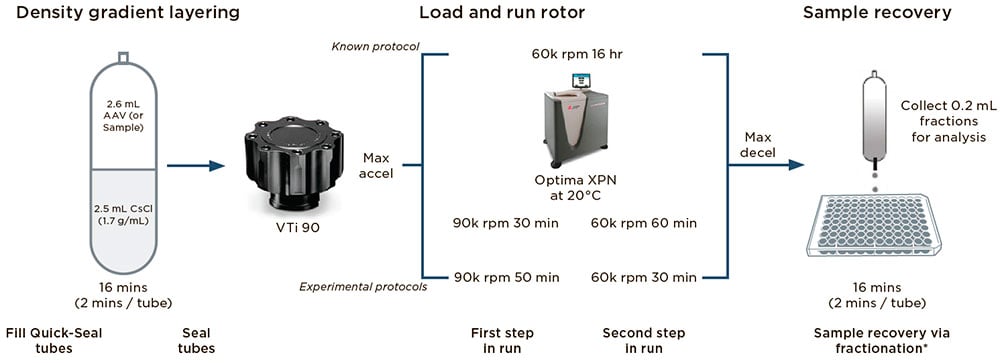Purifying viral vector with VTi 90 rotor and CsCl DGUC
Faster Density Gradient Formation
Objective
Optimize traditional run times of sample purification with cesium chloride (CsCl) to facilitate small scale experiment design.
Method
Centrifuge sample with different (1) run speeds, (2) run times, and (3) layering techniques to reach equilibrium as quickly as possible. Fractionate into 0.2 mL fractions. Using a refractometer, measure the fractions
Centrifuge Protocol
Results
- Equilibrium was achieved in 80 minutes with an optimized protocol. Other runs either did not achieve the same density profile or were longer than 80 minutes.
Conclusions
- Starting a separation at a high speed can help form the gradient more quickly.
- Reducing the run speed for sufficiently long can:
- Create parity with an existing (slower) protocol, leaving the bands of interest at the exact same position.
- Flatten the gradient curve, providing a higher resolution.




